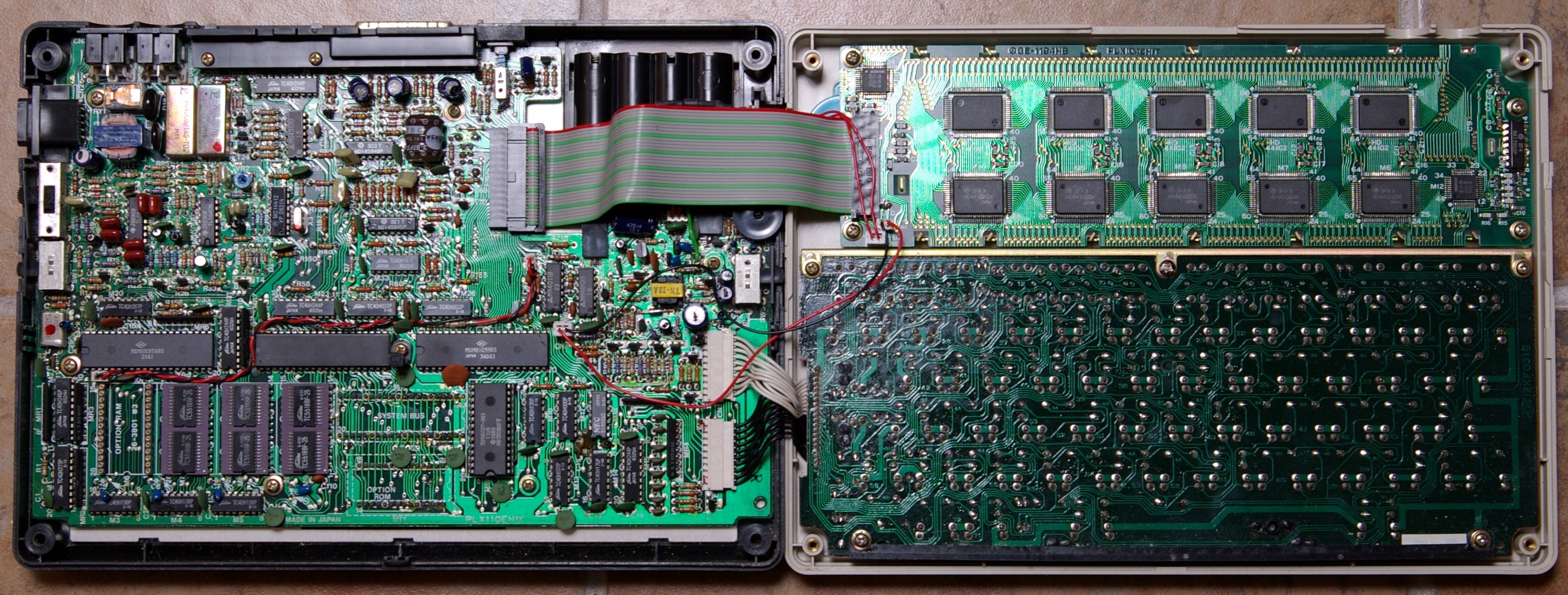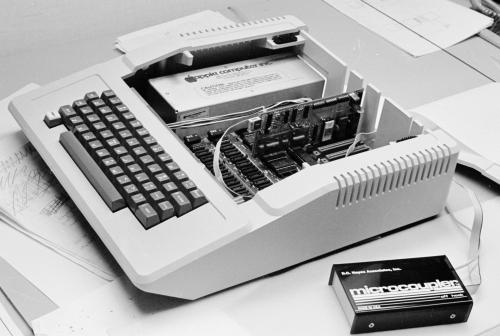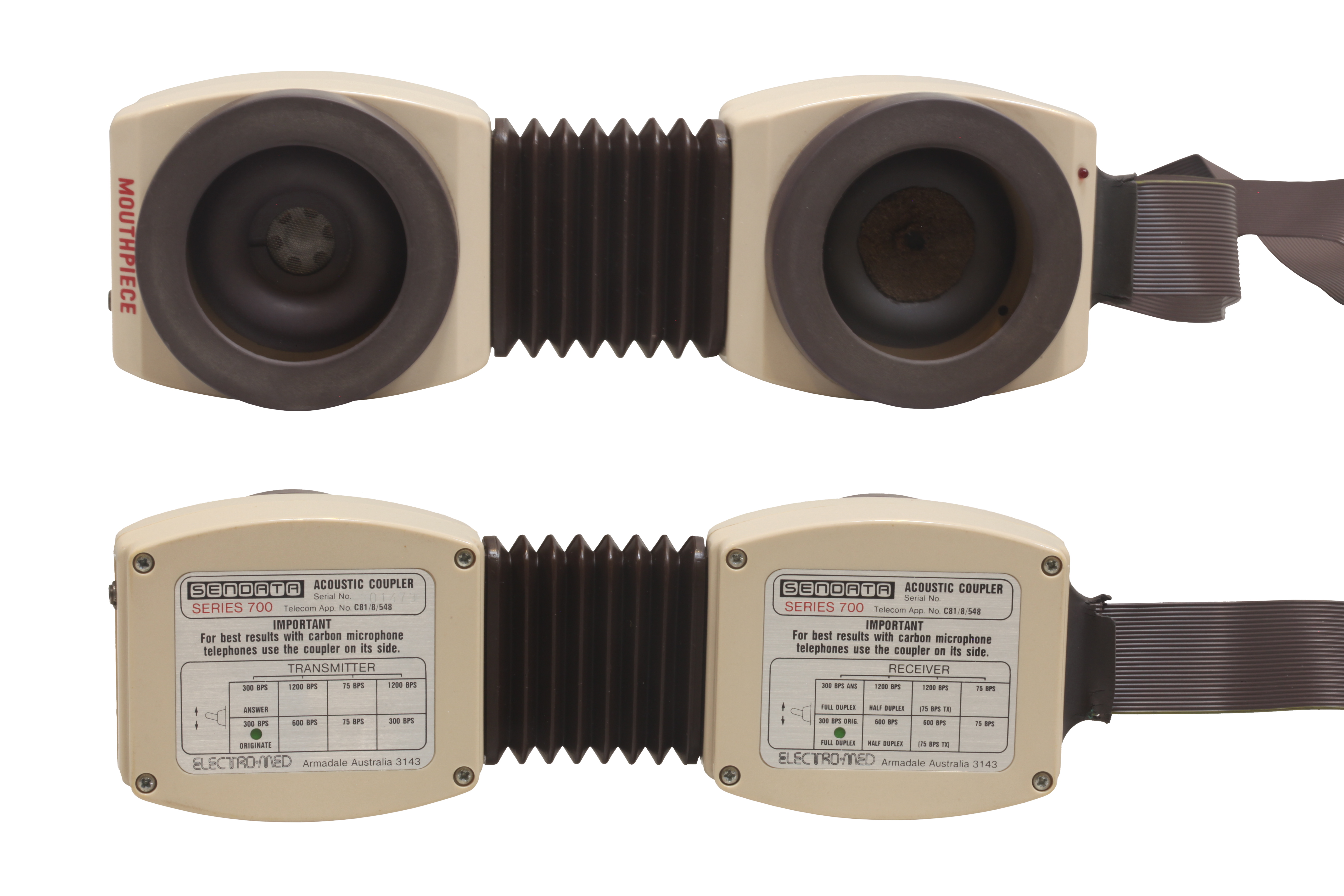|
ZP-150
The ZP-150 was one of the earliest commercially available laptops. It was released in late 1984 by Zenith Data Systems. Market life The ZP-150 was offered for when bundled with the Microsoft Works software, but could be found in the Fall 1985 Heathkit catalog for . The price came down to in the Winter 1986 edition of the same catalog and in the Fall 1987 edition, as it was being phased out with the release of the Z-181 and Z-183. The main target market was the U.S. government and "the mobile executive", for on-site applications. Its relatively small dimensions and light weight allowed it to be easily carried in a standard briefcase or the included carrying case. Hardware specifications *Weight: *Dimensions: 13"W × 11.1"D × 1.8"H *RAM: 32K, expandable to 416K *ROM: 224K, plus 2 sockets for software expansion *CPU: Intel 80C88 *Power: 12VDC or 10 AA alkaline batteries (providing 15 hours run-time w/o modem), plus internal nickel-cadmium battery for retaining memory w ... [...More Info...] [...Related Items...] OR: [Wikipedia] [Google] [Baidu] |
Zenith Data Systems
Zenith Data Systems (ZDS) was a division of Zenith Electronics founded in 1979 after Zenith acquired the Heath Company, which had entered the personal computer market in 1977. Headquartered in Benton Harbor, Michigan, Zenith sold personal computers under both the Heath/Zenith and Zenith Data Systems names. Overview Zenith was an early partner with Microsoft, licensing all Microsoft languages for the Heath/Zenith 8-bit computers. Conversely, Microsoft programmers of the early 1980s did much of their work using Zenith Z-19 and Z-29 CRT display terminals hooked to central mainframe computers. The first Heathkit H8 computer, sold in kit form, was built on an Intel 8080 processor. It ran K7 audio-tape software, punched tape software (with puncher/reader H10) and HDOS (Heath Disk Operating System) software on 5¼" hard-sectored floppy disks. The CP/M operating system was adapted to all Heath/Zenith computers, in 1979. Next, the early Heath/Zenith computers (H88/ H89 and Z-89) wer ... [...More Info...] [...Related Items...] OR: [Wikipedia] [Google] [Baidu] |
Multiplan
Multiplan is spreadsheet program developed by Microsoft and introduced in 1982 as a competitor to VisiCalc. Multiplan was released first for computers running CP/M; it was developed using a Microsoft proprietary p-code C compiler as part of a portability strategy that facilitated ports to systems such as MS-DOS, Xenix, Commodore 64 and 128, TI-99/4A (on four 6K GROMs and a single 8K ROM), Radio Shack TRS-80 Model II, TRS-80 Model 4, TRS-80 Model 100 (on ROM), Apple II, AT&T UNIX PC, and Burroughs B20 series. The CP/M version also ran on the TRS-80 Model II and 4, Commodore 128, and Apple II with a CP/M card. In France, Multiplan was also released for the Thomson computers in 1986 and same year on Japan for MSX compatible computers with name MSX-Plan. Despite the release of Microsoft Chart, a graphics companion program, Multiplan continued to be outsold by Lotus 1-2-3. Multiplan was replaced by Microsoft Excel, which followed some years later on both the Apple Macintosh ( ... [...More Info...] [...Related Items...] OR: [Wikipedia] [Google] [Baidu] |
Laptop
A laptop, laptop computer, or notebook computer is a small, portable personal computer (PC) with a screen and alphanumeric keyboard. Laptops typically have a clam shell form factor with the screen mounted on the inside of the upper lid and the keyboard on the inside of the lower lid, although 2-in-1 PCs with a detachable keyboard are often marketed as laptops or as having a "laptop mode". Laptops are folded shut for transportation, and thus are suitable for mobile use. They are so named because they can be practically placed on a person's lap when being used. Today, laptops are used in a variety of settings, such as at work, in education, for playing games, web browsing, for personal multimedia, and for general home computer use. As of 2022, in American English, the terms ''laptop computer'' and ''notebook computer'' are used interchangeably; in other dialects of English, one or the other may be preferred. Although the terms ''notebook computers'' or ''notebooks'' ... [...More Info...] [...Related Items...] OR: [Wikipedia] [Google] [Baidu] |
History Of Computing Hardware
The history of computing hardware covers the developments from early simple devices to aid calculation to modern day computers. Before the 20th century, most calculations were done by humans. The first aids to computation were purely mechanical devices which required the operator to set up the initial values of an elementary arithmetic operation, then manipulate the device to obtain the result. Later, computers represented numbers in a continuous form (e.g. distance along a scale, rotation of a shaft, or a voltage). Numbers could also be represented in the form of digits, automatically manipulated by a mechanism. Although this approach generally required more complex mechanisms, it greatly increased the precision of results. The development of transistor technology and then the integrated circuit chip led to a series of breakthroughs, starting with transistor computers and then integrated circuit computers, causing digital computers to largely replace analog computers. ... [...More Info...] [...Related Items...] OR: [Wikipedia] [Google] [Baidu] |
TRS-80
The TRS-80 Micro Computer System (TRS-80, later renamed the Model I to distinguish it from successors) is a desktop microcomputer launched in 1977 and sold by Tandy Corporation through their Radio Shack stores. The name is an abbreviation of ''Tandy Radio Shack, Z80 icroprocessor'. It is one of the earliest mass-produced and mass-marketed retail home computers. The TRS-80 has a full-stroke QWERTY keyboard, the Zilog Z80 processor, 4 KB dynamic random-access memory (DRAM) standard memory, small size and desk area, floating-point Level I BASIC language interpreter in read-only memory (ROM), 64-character per line video monitor, and a starting price of US$600 (equivalent to US$ in ). A cassette tape drive for program storage was included in the original package. While the software environment was stable, the cassette load/save process combined with keyboard bounce issues and a troublesome Expansion Interface contributed to the Model I's reputation as not well-suited to se ... [...More Info...] [...Related Items...] OR: [Wikipedia] [Google] [Baidu] |
Tandy 600
The TRS-80 Model 100 is a portable computer introduced in April 26th, 1983. It is one of the first notebook-style computers, featuring a keyboard and liquid crystal display, in a battery-powered package roughly the size and shape of a notepad or large book. It was made by Kyocera, and originally sold in Japan as the Kyotronic 85. Although a slow seller for Kyocera, the rights to the machine were purchased by Tandy Corporation. The computer was sold through Radio Shack stores in the United States and Canada and affiliated dealers in other countries. It became one of the company's most popular models, with over 6 million units sold worldwide. The Olivetti M-10 and the NEC PC-8201 and PC-8300 were also built on the same Kyocera platform, with some design and hardware differences. It was originally marketed as a ''Micro Executive Work Station'' (MEWS), although the term did not catch on and was eventually dropped. Specifications * Processor: 8-bit Oki 80C85, CMOS, * Memory: ... [...More Info...] [...Related Items...] OR: [Wikipedia] [Google] [Baidu] |
Apple II
The Apple II (stylized as ) is an 8-bit home computer and one of the world's first highly successful mass-produced microcomputer products. It was designed primarily by Steve Wozniak; Jerry Manock developed the design of Apple II's foam-molded plastic case, Rod Holt developed the switching power supply, while Steve Jobs's role in the design of the computer was limited to overseeing Jerry Manock's work on the plastic case. It was introduced by Jobs and Wozniak at the 1977 West Coast Computer Faire, and marks Apple's first launch of a personal computer aimed at a consumer market—branded toward American households rather than businessmen or computer hobbyists. ''Byte'' magazine referred to the Apple II, Commodore PET 2001, and TRS-80 as the "1977 Trinity". As the Apple II had the defining feature of being able to display color graphics, the Apple logo was redesigned to have a spectrum of colors. The Apple II is the first model in the Apple II series, followed by App ... [...More Info...] [...Related Items...] OR: [Wikipedia] [Google] [Baidu] |
IBM PC
The IBM Personal Computer (model 5150, commonly known as the IBM PC) is the first microcomputer released in the IBM PC model line and the basis for the IBM PC compatible de facto standard. Released on August 12, 1981, it was created by a team of engineers and designers directed by Don Estridge in Boca Raton, Florida. The machine was based on open architecture and third-party peripherals. Over time, expansion cards and software technology increased to support it. The PC had a substantial influence on the personal computer market. The specifications of the IBM PC became one of the most popular computer design standards in the world. The only significant competition it faced from a non-compatible platform throughout the 1980s was from the Apple Macintosh product line. The majority of modern personal computers are distant descendants of the IBM PC. History Prior to the 1980s, IBM had largely been known as a provider of business computer systems. As the 1980s opened, the ... [...More Info...] [...Related Items...] OR: [Wikipedia] [Google] [Baidu] |
Acoustic Coupler
In telecommunications, an acoustic coupler is an interface device for coupling electrical signals by acoustical means—usually into and out of a telephone. The link is achieved through converting electric signals from the phone line to sound and reconvert sound to electric signals needed for the end terminal, such as a teletypewriter, and back, rather than through direct electrical connection. History and applications Prior to its breakup in 1984, Bell System's legal monopoly over telephony in the United States allowed the company to impose strict rules on how consumers could access their network. Customers were prohibited from connecting equipment not made or sold by Bell to the network. The same set-up was operative in nearly all countries, where the telephone companies were nationally owned. In many households, telephones were hard-wired to wall terminals before connectors like RJ11 and BS 6312 became standardized. The situation was similar in other countries. In Austra ... [...More Info...] [...Related Items...] OR: [Wikipedia] [Google] [Baidu] |
Battery Indicator
A battery indicator (also known as a battery gauge) is a device which gives information about a battery. This will usually be a visual indication of the battery's state of charge. It is particularly important in the case of a battery electric vehicle. Automobiles Some automobiles are fitted with a battery condition meter to monitor the starter battery. This meter is, essentially, a voltmeter but it may also be marked with coloured zones for easy visualization. Many newer cars no longer offer voltmeters or ammeters; instead, these vehicles typically have a light with the outline of an automotive battery on it. This can be somewhat misleading as it may be confused for an indicator of a bad battery when in reality it indicates a problem with the vehicle's charging system. Alternatively, an ammeter may be fitted. This indicates whether the battery is being charged or discharged. In the adjacent picture, the ammeter is marked "Alternator" and the symbols are "C" (charge) and "D" ... [...More Info...] [...Related Items...] OR: [Wikipedia] [Google] [Baidu] |
Laptop
A laptop, laptop computer, or notebook computer is a small, portable personal computer (PC) with a screen and alphanumeric keyboard. Laptops typically have a clam shell form factor with the screen mounted on the inside of the upper lid and the keyboard on the inside of the lower lid, although 2-in-1 PCs with a detachable keyboard are often marketed as laptops or as having a "laptop mode". Laptops are folded shut for transportation, and thus are suitable for mobile use. They are so named because they can be practically placed on a person's lap when being used. Today, laptops are used in a variety of settings, such as at work, in education, for playing games, web browsing, for personal multimedia, and for general home computer use. As of 2022, in American English, the terms ''laptop computer'' and ''notebook computer'' are used interchangeably; in other dialects of English, one or the other may be preferred. Although the terms ''notebook computers'' or ''notebooks'' ... [...More Info...] [...Related Items...] OR: [Wikipedia] [Google] [Baidu] |








